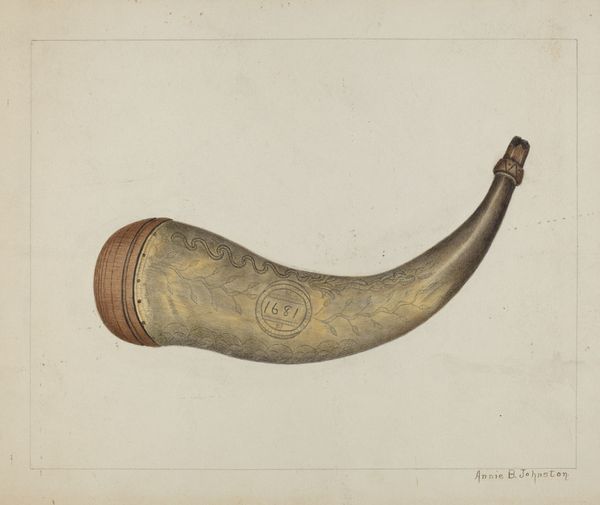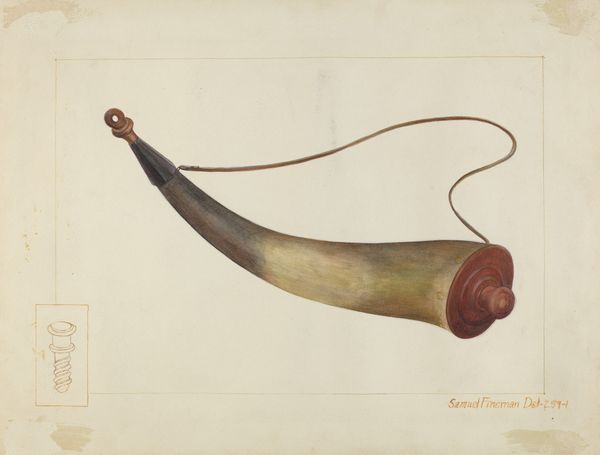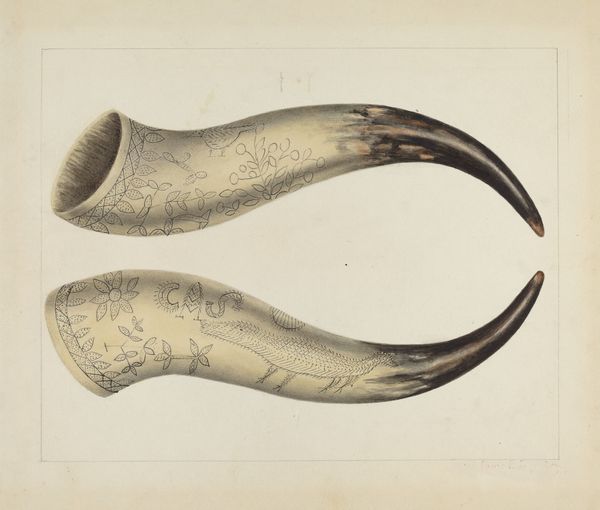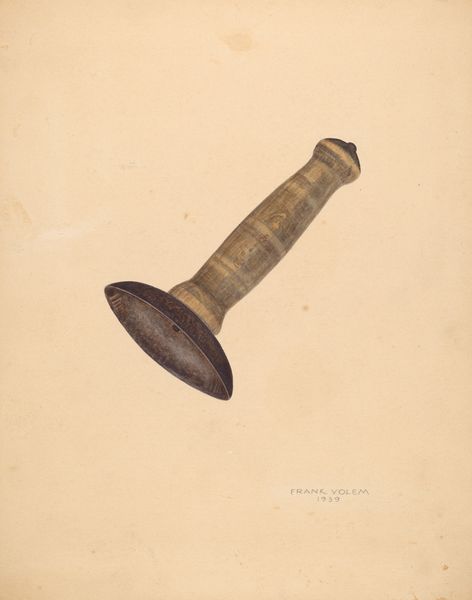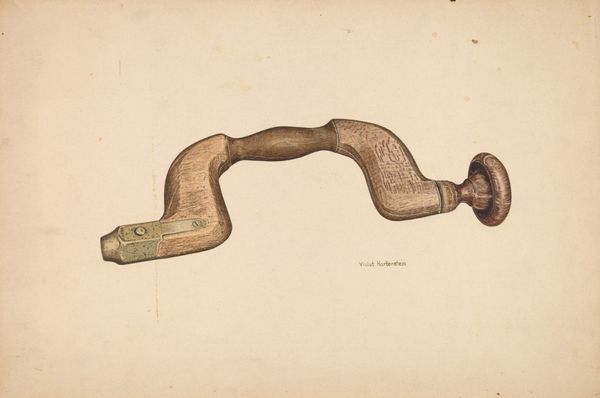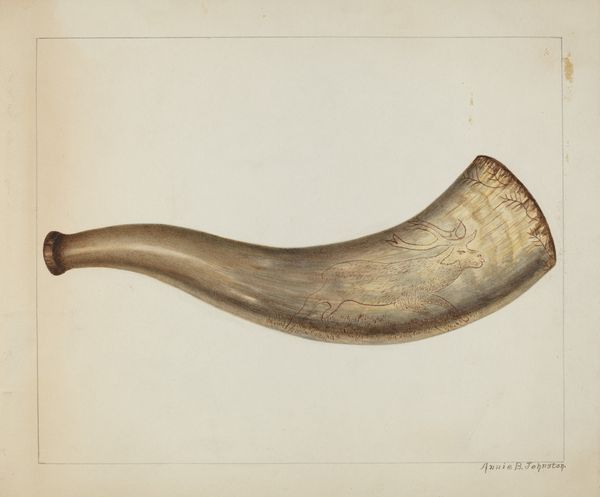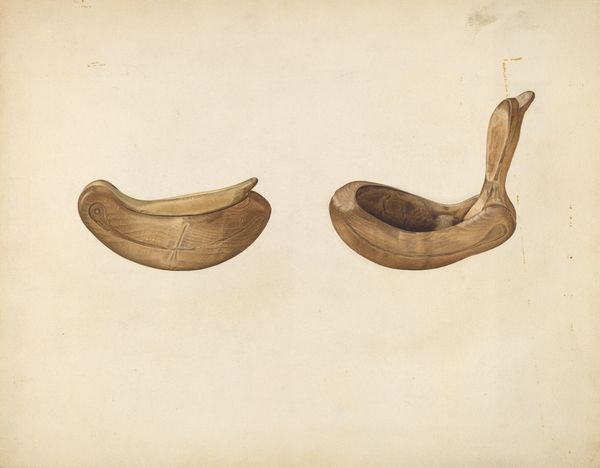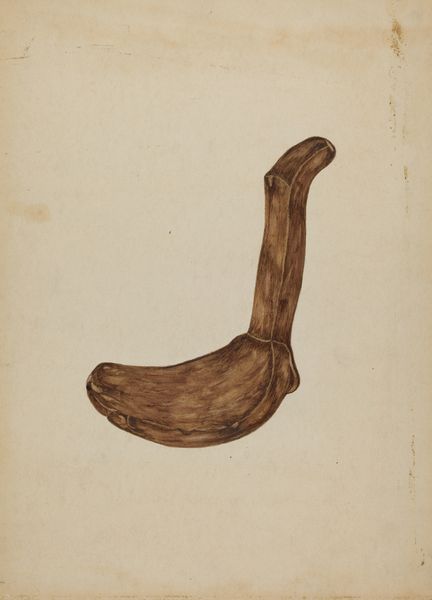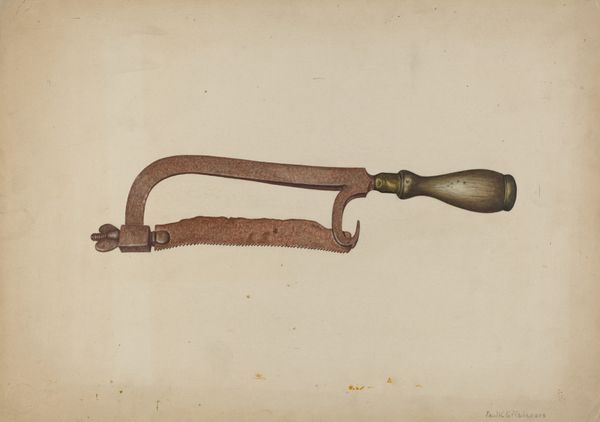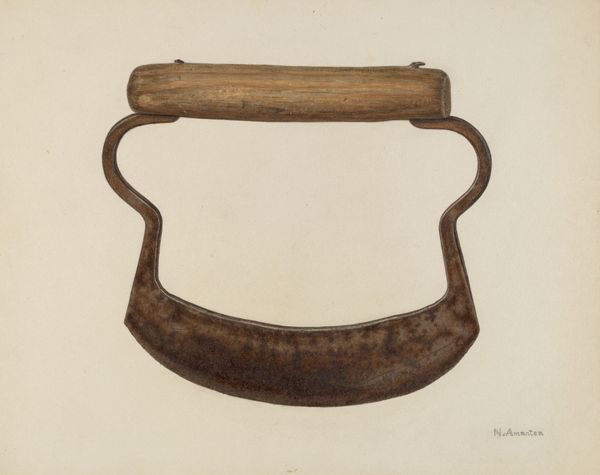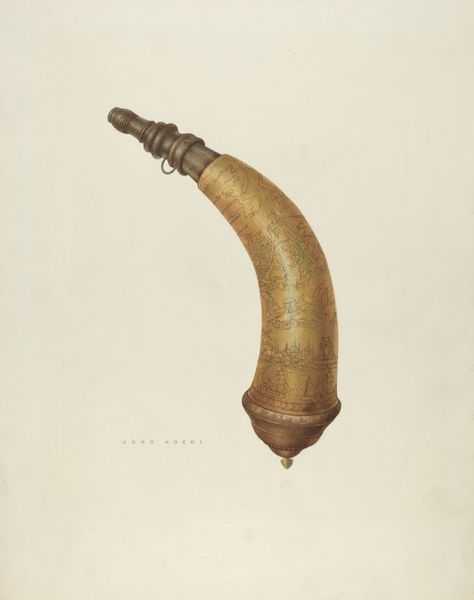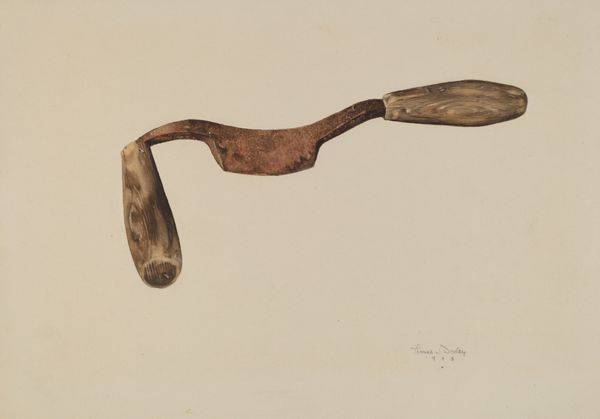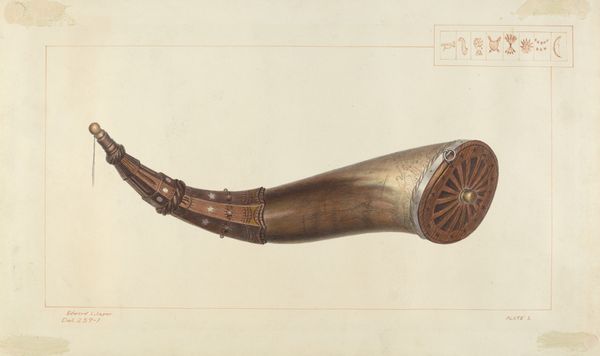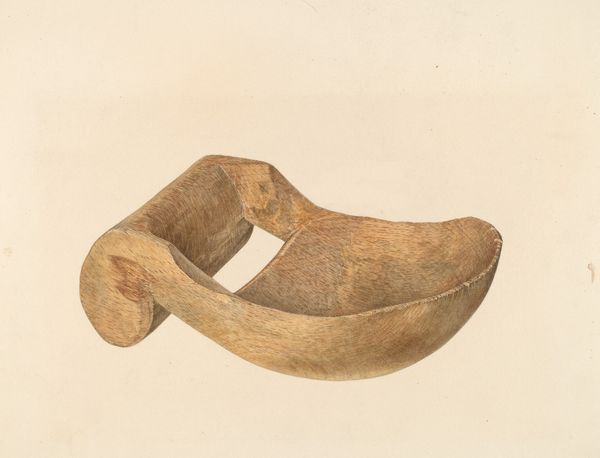
drawing, watercolor
#
drawing
#
watercolor
#
folk-art
#
decorative-art
#
watercolor
Dimensions: overall: 22.9 x 27.8 cm (9 x 10 15/16 in.) Original IAD Object: 7" long; 2" in diameter
Copyright: National Gallery of Art: CC0 1.0
Editor: This is "Powder Horn," a watercolor drawing from 1938 by Annie B. Johnston. It strikes me as an oddly charming rendering of something so utilitarian. What layers of history do you see when you look at this? Curator: It's fascinating how Johnston immortalizes these objects, isn't it? The powder horn itself, historically, represents not just a tool, but power, and particularly colonial power during westward expansion. It's intimately linked with resource control and territorial disputes. Editor: So, is Johnston celebrating or critiquing that history here? The work's labelled as folk art - but what does that MEAN, exactly, in this context? Curator: Ah, the politics of folk art! By labeling it thus, are we romanticizing a complex and often violent period? Think about it - who gets to define "folk art" and why? And what stories might these specific horns—possibly reproductions themselves—carry regarding nationalism and memory? Is there any cultural appropriation happening? Editor: I see what you mean. So the display of these powder horns becomes an act in itself, maybe a statement about our relationship with the past? Curator: Precisely! The piece raises interesting questions about how museums and other cultural institutions shape the narrative around such objects. By depicting them in a watercolor drawing in the 1930's, is it being memorialized or recontextualized to comment on American mythology? Editor: It's like the image layers an additional perspective between object and viewer! That definitely deepens my understanding. Thanks! Curator: And mine as well! It's amazing how much cultural weight a simple drawing can hold.
Comments
No comments
Be the first to comment and join the conversation on the ultimate creative platform.
